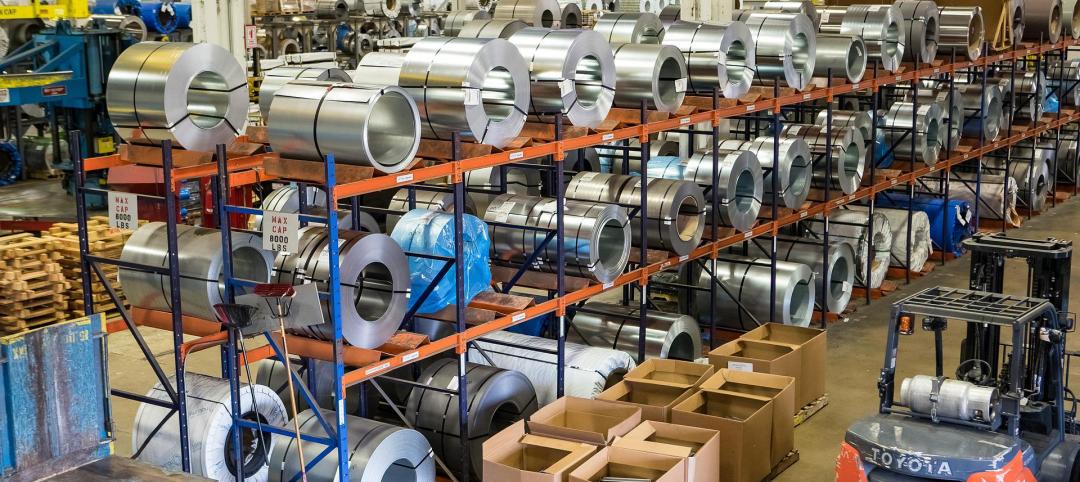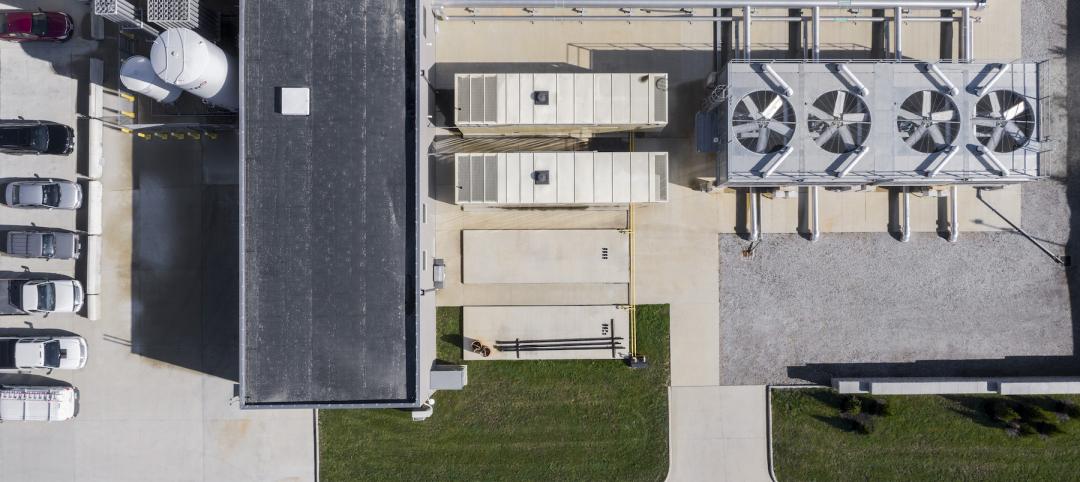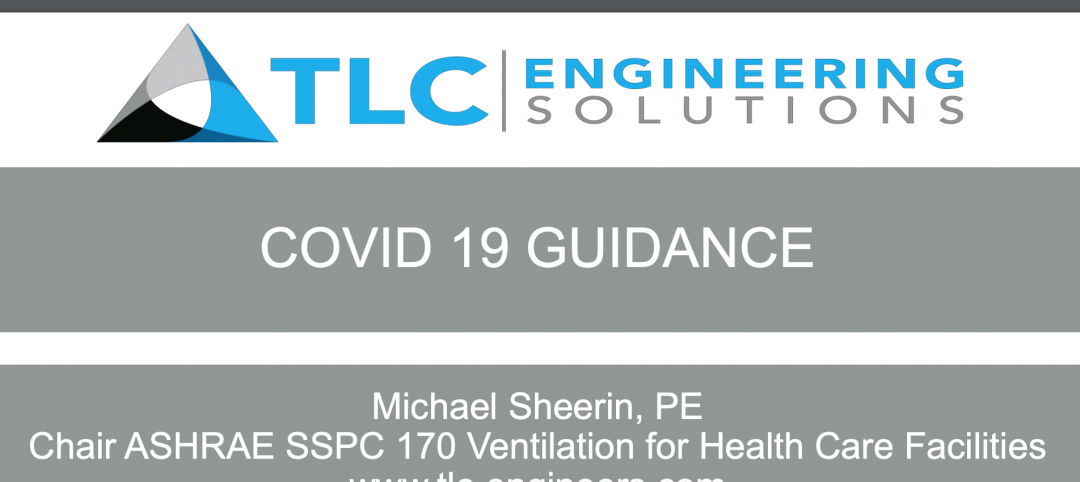The Chicago Motor Club building is a historic city landmark that still embodies the Art Deco design elements that have long been held as cultural treasures. The 17-story building, which first opened in 1928 and was added to the National Register of Historic Places in 1978, was crafted with a terra cotta and limestone façade and features an iconic 29-foot mural in the grand lobby that highlights popular driving destinations of the building’s original tenants across a map of the United States. The triple-height, rectangular lobby features small mezzanines at both the north and south ends, alcoves against each wall and is finely detailed throughout with Art Deco-style ornamentation.
In 1986, the Chicago Motor Club relocated its headquarters to Des Plaines, Ill., leaving the original building to suffer through a tangled web of owners. When Hampton by Hilton approached the building’s then-owners with hopes of transforming it into a hotel, the hotel chain was met with the daunting task of undergoing a full renovation of the historic space that had been unoccupied since 2004. One of the developer’s key challenges was installing an updated, efficient heating and cooling system that would reflect the enhanced values of a lavish downtown hotel without disturbing or disrupting the building’s historic – and protected – architecture.
CRITERIA: First and foremost, it was imperative that the renovated building maintain its original appearance as a tribute to car culture – a vital facet of historic Chicagoan life. Before the transformation of a hotel even began, State Mechanical Services, the installing mechanical contractor, was hand-selected to provide a heating and air conditioning system that would allow the Chicago Motor Club to keep its architectural integrity, while also serving its new purpose in a practical manner – providing the ultimate in guest comfort. It was also essential that any heating, ventilation and air conditioning (HVAC) equipment installed in the Chicago Motor Club building address installation challenges due to limited interior and rooftop space and offer conditioning options that could efficiently respond to the exceptional cold Chicago winters and warm summers.
The new owners also wanted to ensure the new system, as it would be operating on a 24/7 basis, would maintain low sound levels so as not to disrupt the hotel’s guests and individual room temperatures could be centrally monitored to help control and identify any guest comfort issues.
SOLUTION: To best meet the HVAC needs of this historic building, State Mechanical Services chose air conditioning solutions from LG Electronics (represented by Midwest Applied Solutions) to outfit the 143-room, newly-dubbed Hampton by Hilton hotel. Given the building’s historic status, Midwest Applied Solutions had to ensure all LG mechanical equipment fit in the building’s limited interior space and on its small rooftop footprint (35 ft. by 35 ft.), as well as avoid making any modifications to the building’s exterior. To meet all of the aforementioned criteria, LG suggested using its Multi V™ IV Heat Recovery system with the LG Art Cool™ Mirror indoor units and the LG AC Smart IV central controller, which provide utility, aesthetics and controls, respectively.
For the building as a whole, Midwest Applied Solutions recommended installing LG’s Multi V IV Heat Recovery system, which provides outstanding installation flexibility and can be easily installed on the roof for minimal visibility in addition to guaranteeing optimal guest comfort. The limited ductwork required for LG’s systems enabled State Mechanical Services to have a minimally invasive installation plan, which kept disruption to the space to a minimum and installation costs low.
“It was an easy sell to incorporate the LG Multi V IV Heat Recovery systems into this historic auto club building. Thanks to LG’s VRF – or variable refrigerant flow – technology the building’s structure wasn’t compromised, and it was able to keep the same quintessential appearance it once held in Chicago,” said David Holbrook, Project Manager at Midwest Applied Solutions. “Prior to selecting LG VRF as the HVAC technology for this project, the owners were considering a heat pump system, unaware that VRF, like that of LG’s Multi V IV line, is not only just as, if not more, energy efficient than conventional heat pump technology, but also proved to be more cost effective in the end.”

LG’s Multi V IV compressors also feature LG Vapor Injection Technology, which allows for maximum heating performance in cold climates, like winters in Chicago, and in low ambient conditions without the need for an additional low ambient kit. An attractive element to the owner was the Multi V IV’s ability to keep the compressors running down to -13 degrees Fahrenheit, meaning heating will not be compromised in Chicago’s extreme cold temperatures.
Additionally, for each individual guest room, the owner and contractor chose to install LG’s ductless Art Cool Mirror indoor units. LG’s Art Cool series provides energy-efficient air conditioning solutions that enhance the décor of a facility, and the Art Cool Mirror’s cool, contemporary mirrored finish is no exception. The indoor units also met the owner’s requirement of maintaining low sound levels for minimal guest interruption, operating at sound levels as low as 28 dB(A), which is one of the quietest in the industry.
LG’s flagship VRF technology, as incorporated in the Multi V IV Heat Recovery system, also offers custom temperature control in specific rooms, allowing each hotel guest to heat or cool based on his or her own personal comfort needs. This technological innovation is also cost-effective as only the rooms being used will be heated or cooled at any particular time. With VRF technology, the building can take advantage of recovered waste heat – the capturing of heat energy normally discharged to the atmosphere by zones in cooling mode and moving that energy to the zones that need heat – so one guest can have heating and another cooling simultaneously. LG systems featuring VRF also have a lower lifecycle cost than traditional HVAC systems currently on the market.
Finally, as centralized control of the HVAC system was of great significance to the owner, LG delivered the AC Smart IV that communicates with and monitors each of LG’s indoor Art Cool Mirror units for seamless building management. Up to 128 indoor units can be managed with one AC Smart IV for the utmost convenience and cost-savings. The AC Smart IV is also outfitted with a clear, 10.2-inch LCD touch-screen display with web-access, making monitoring the hotel’s complete HVAC system simple and convenient.
RESULTS: The installation of LG’s air conditioning systems was completed in a timely and seamless manner, strategically meeting – and at times exceeding – all of the challenges and criteria set forth by the project. The Chicago Motor Club building reopened on May 19, 2015 as the LEED-certified Hampton Inn Chicago Downtown, incorporating all the functional amenities of a bustling, modern hotel property while still maintaining the original historic grandeur of the building.
“The contractor I worked with on this installation is now an advocate for LG VRF technology and systems,” said Holbrook, “The LG Multi V IV – like all LG VRF systems – provides a key differentiator in the market as a result of its flexibility and unprecedented energy efficiency. The owners of the Hampton Inn Chicago Downtown were systematically impressed with how well all of LG’s systems – from the Art Cool Mirror units down to the AC Smart IV – worked flawlessly together to create a warm (or cool!), welcoming environment for current and future guests.”
Related Stories
Green | Jul 26, 2022
Climate tech startup BlocPower looks to electrify, decarbonize the nation's buildings
The New York-based climate technology company electrifies and decarbonizes buildings—more than 1,200 of them so far.
Building Materials | Jun 20, 2022
Early-stage procurement: The next evolution of the construction supply chain
Austin Commercial’s Jason Earnhardt explains why supply chain issues for the construction industry are not going to go away and how developers and owners can get ahead of project roadblocks.
Sponsored | HVAC | Jun 14, 2022
Healing the urban fabric: The surprising impact of MagicPak HVAC
The Legends at Berry active adult housing complex in St. Paul, Minnesota helped transform a former industrial site into a thriving residential campus. MagicPak All-in-One® HVAC Systems provided the energy-efficient heating needed to handle extreme Minnesota winters while enabling architects to create an inviting home environment—and even qualify for additional funding incentives.
Multifamily Housing | Apr 7, 2022
Ken Soble Tower becomes world’s largest residential Passive House retrofit
The project team for the 18-story high-rise for seniors slashed the building’s greenhouse gas emissions by 94 percent and its heating energy demand by 91 percent.
M/E/P Systems | Jan 27, 2022
Top 5 building HVAC system problems and how to fix them
When your HVAC system was new, it was designed to keep the indoor environment comfortable, functional, and safe. Over time, that system can drift out of alignment, leading to wasted resources, excessive energy consumption, and reduced occupant comfort.
Resiliency | Jul 15, 2021
A new report urges federal investment in healthier buildings
The National Institute of Building Sciences also calls for code changes and greater cooperation between building owners and the AEC community.
Coronavirus | Apr 1, 2020
TLC’s Michael Sheerin offers guidance on ventilation in COVID-19 healthcare settings
Ventilation engineering guidance for COVID-19 patient rooms
Sponsored | HVAC | Feb 3, 2020
Reliable Building Systems Increase Net Operating Income by Retaining Tenants
Tenants increasingly expect a well-crafted property that feels unique, authentic, and comfortable—with technologically advanced systems and spaces that optimize performance and encourage collaboration and engagement. The following guidance will help owners and property managers keep tenants happy.
Sponsored | HVAC | Jan 6, 2020
Four Ways Building Systems Create Long-term Profitability
When accounting for the total cost of ownership and the potential return on investment, owners and developers should consider total energy usage, the lifespan of building systems equipment, the recruitment and retention of occupants, and lease rates.
Sponsored | HVAC | Jan 6, 2020
Maximize Energy Efficiency in Class A Office Buildings With Modern Building Systems
Energy-efficient building design starts with the building envelope, but the building systems have a tremendous impact on energy use as well.













